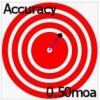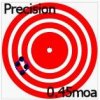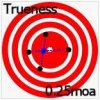What do "official" and "group size" have to do with hunting? The measurement techniques described above are right for bench rest and similar competition, but shooting for score on target rings is somewhat more realistic as the measure of a hunting rifle. No form of fixed range repetitive shooting competition gives a good indication of how effective the shooter/rifle/cartridge will be in actual hunting conditions.
Lou's right, and this where many hunters and competitors(both) misunderstand differences in accuracy, field accuracy, and precision.
When you consider the measured performance attributes of a given gun, you have to take into account the comparison standards -for that gun's use. In other words, focus on what matters.
For LRH, grouping means nothing. What matters in LRH is field accuracy-vs-killzone, as this sets your limits(which you should always stay within).
Now this is not simple. It takes a good amount of honest/objective testing to determine. It can take huge efforts to improve on. You might find that a bad grouping gun is actually the most accurate gun you've ever shot! And then it's as possible that gun would let you down in field accuracy.. You can't predict it, and you never know until proven.
It's important that you don't fixate(or compete with your buddies) on the wrong attribute.
-Accuracy is center of impact(POI) to center of mark(POA). It's definable with any or all single shots.
You could say furthest POI of .524" from POA = 1/2moa accurate.
-Field accuracy brings in accuracy per field situation.
With this you qualify accuracy with range, rest, air density or bore conditions,etc.
You could say a POI of 3.14" cold bore, off a bipod, at 600yds = 1/2moa field accurate.
-Precision is grouping, and is independent of accuracy.
-Precision and accuracy combined for 'probabilities' is called Trueness(useless to competitors and hunters).



